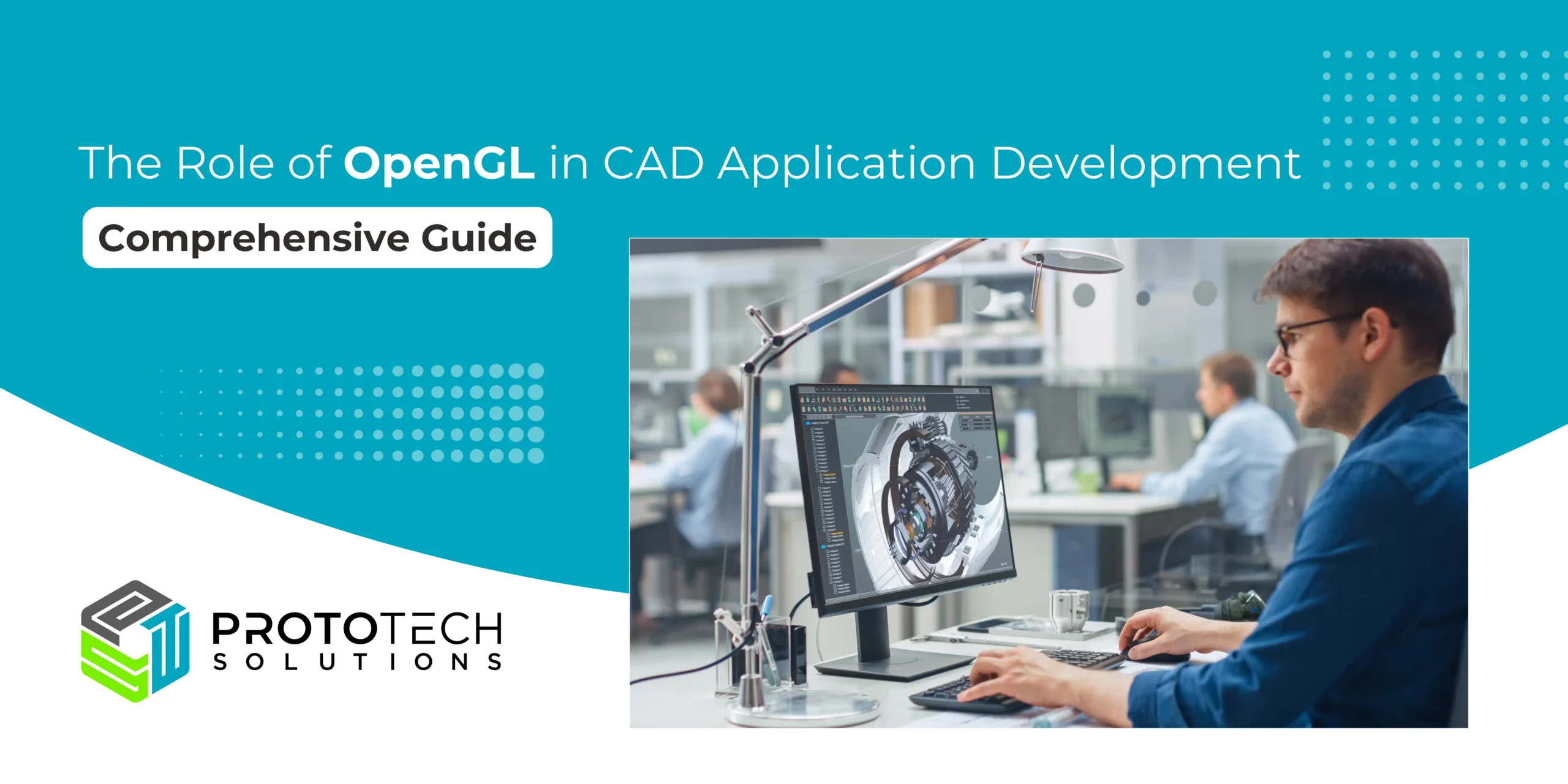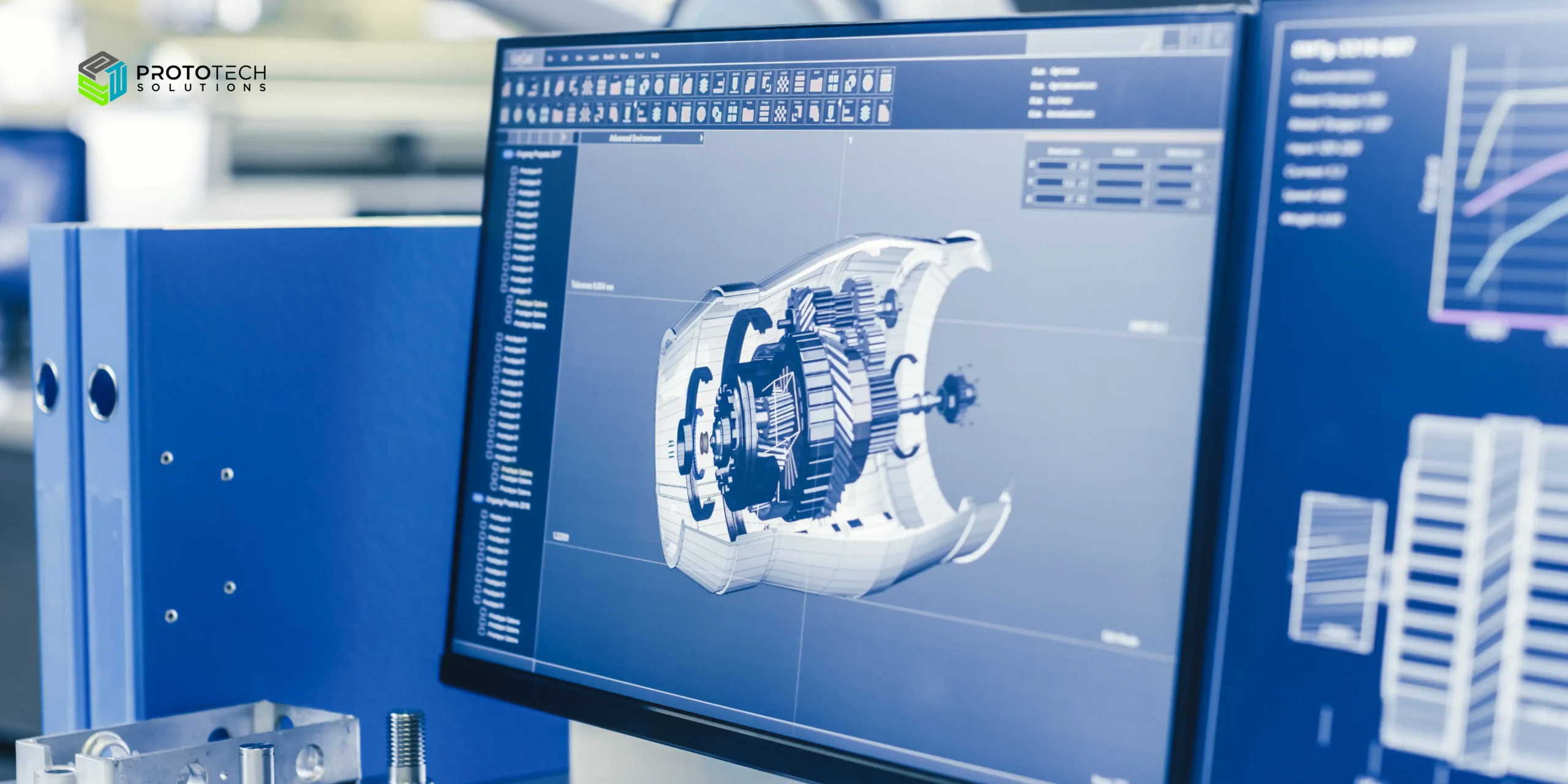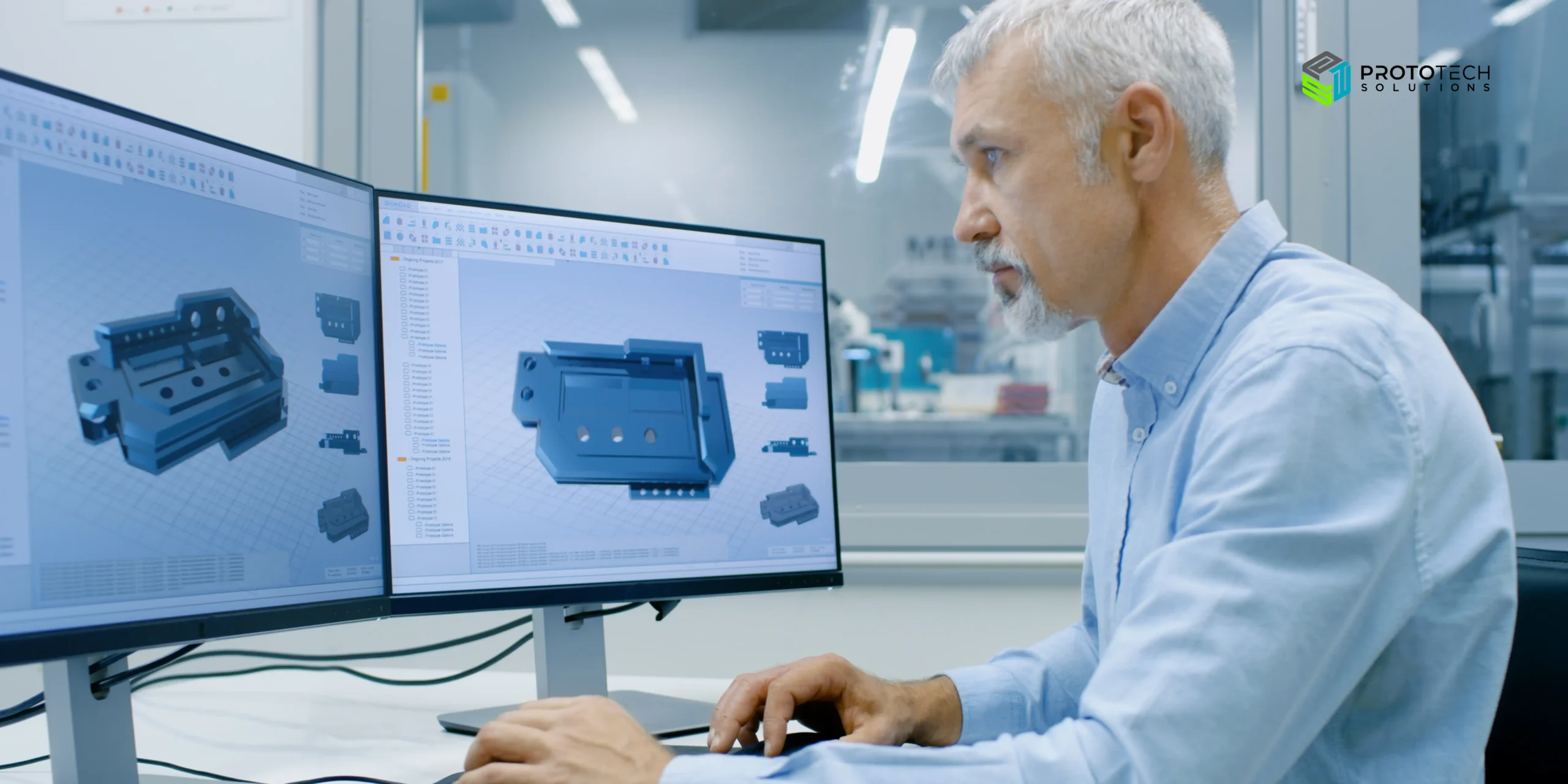The Role of OpenGL in CAD Application Development

Introduction
Computer-aided design (CAD) applications are essential in various industries, including manufacturing, construction, and engineering. According to recent market research, the global market size for 3D CAD software was valued at USD 10.38 billion in 2022 and is projected to grow at a compound annual growth rate (CAGR) of 6.7% from 2023 to 2030. 3D CAD software is utilized by designers, engineers, architects, and other professionals to create and modify 3D models of products, buildings, and other structures. They enable professionals to create precise drawings, models, and simulations of physical objects. Central to the development and functionality of these applications is the graphics technology that renders 2D and 3D visuals.
OpenGL (Open Graphics Library) is a cross-platform, open-source graphics API (Application Programming Interface) that allows developers to create 2D and 3D graphics. Initially developed by Silicon Graphics Inc. (SGI) in the early 1990s, It is used for various applications, including computer-aided design (CAD), video games, scientific visualization, virtual reality, and flight simulation. OpenGL has since become a standard in the graphics industry. It provides a robust framework for rendering vector graphics, enabling the development of high-performance visual applications. In this post, we’ll explore the significance of OpenGL in CAD application development, its benefits, and how it enhances the capabilities of these critical tools.
Why OpenGL is Crucial for CAD Development
CAD applications require powerful and flexible graphics capabilities to handle complex designs and renderings. Here are several reasons why OpenGL is integral to CAD software development:
1. Cross-Platform Compatibility
OpenGL’s cross-platform nature is one of its most significant advantages. CAD applications often need to run on various operating systems, including Windows, macOS, and Linux. OpenGL provides a consistent API across these platforms, ensuring the application behaves similarly regardless of the operating system. This cross-platform compatibility simplifies development and maintenance, allowing developers to focus on enhancing functionality rather than dealing with platform-specific issues.
2. High Performance and Efficiency
CAD applications must handle intricate and computationally intensive tasks. OpenGL is designed to leverage the power of the GPU (Graphics Processing Unit) to render complex scenes efficiently. By offloading rendering tasks to the GPU, OpenGL ensures that CAD applications can handle large models and render them quickly and accurately. This performance boost is crucial for professionals who rely on real-time feedback when designing and modifying models.
3. Extensive Feature Set
OpenGL offers a rich set of features that are essential for CAD applications. These include support for:
- Advanced Shading Techniques: OpenGL allows developers to implement sophisticated shading techniques, which can enhance the visual quality of models. Phong shading, bump mapping, and shadow mapping are commonly used in CAD to provide realistic lighting and textures.
- Anti-Aliasing: This technique helps smooth out the edges of rendered objects, reducing visual artifacts and improving the overall quality of the images.
- Depth Buffering: Depth buffering ensures that objects are rendered in the correct order, with closer objects appearing in front of those farther away. This is essential for creating accurate 3D representations.
- Texture Mapping: OpenGL supports various texture mapping techniques, allowing developers to apply images to 3D models to create detailed and realistic surfaces.
4. Extensibility and Flexibility
OpenGL’s extensible nature allows it to adapt to new graphics technologies and techniques. This flexibility is vital for CAD applications, which must evolve to incorporate advancements in graphics hardware and software. OpenGL extensions provide access to cutting-edge features without waiting for a new version of the API, ensuring that CAD software can stay at the forefront of graphics technology.
Key Benefits of Using OpenGL in CAD Development

Integrating OpenGL into CAD application development offers numerous benefits that enhance both the development process and the end-user experience. Here are some of the key advantages:
- Improved Visualization: Visualization is at the heart of CAD applications. OpenGL provides the tools necessary to create detailed and accurate visual representations of designs. High-quality rendering, realistic lighting, and texture mapping help users visualize their models more effectively, leading to better design decisions and fewer errors.
- Enhanced Interactivity: Real-time interactivity is crucial in CAD applications. Designers need to manipulate models, change viewpoints, and see immediate updates to their work. OpenGL’s ability to render complex scenes quickly enables smooth and responsive interactions, making the design process more intuitive and efficient.
- Scalability: As complex projects grow, CAD applications must scale to handle larger models and more detailed renderings. OpenGL’s performance and efficiency ensure the application can manage increased workloads without compromising speed or quality. This scalability is essential for industries that deal with large-scale projects, such as architecture and engineering.
Future Trends and Developments
The role of OpenGL in CAD applications is continually evolving, driven by advancements in graphics technology and the increasing demands of users. Here are some future trends and developments to watch:
- Integration with Virtual and Augmented Reality
Virtual Reality (VR) and Augmented Reality (AR) transform how designers interact with their models. OpenGL is poised to play a crucial role in this shift by providing the rendering capabilities needed for immersive VR and AR experiences. These technologies allow designers to visualize and interact with their models in entirely new ways, improving understanding and collaboration.
- Enhanced Real-Time Rendering
Real-time rendering is becoming more sophisticated, with techniques like ray tracing gaining prominence. OpenGL is evolving to support these advanced rendering methods, enabling CAD applications to produce even more realistic and detailed visuals. This will enhance the accuracy and quality of designs, leading to better end products.
- Greater Use of AI and Machine Learning
Artificial Intelligence (AI) and Machine Learning (ML) are being integrated into CAD applications to automate tasks and provide intelligent design suggestions. OpenGL can support these innovations by rendering complex AI-driven visualizations and simulations in real time, making it easier for designers to understand and implement AI recommendations.
Boost Your CAD System with Custom Tools

ProtoTech Solutions company was founded in 2005, we specialize in creating custom CAD software development tailored to meet the unique needs of our clients. Our team of experts leverages deep industry knowledge and cutting-edge technology to deliver bespoke CAD solutions that enhance productivity, streamline workflows, and optimize design processes. Whether you’re looking to integrate advanced features, improve performance, or develop entirely new CAD functionalities, our customized software solutions are designed to provide exceptional value and drive your business forward.
SDKs Expertise: OpenGL, HOOPS Visualize, Eyeshot (devDept), Open Design Alliance (ODA), Open Inventor, Three.js, Unity, and much more.
Why choose us? We have over 20 years of experience in the CAD/CAM industry and have developed 100+ CAD plugins published on the Autodesk app store. We have delivered more than 1 million hours and completed over 200 small, large, and complex projects for over 2500 satisfied customers across the globe. Partner with ProtoTech Solutions for high-quality, cost-effective CAD capabilities and achieve your design goals. Contact our CAD experts today to learn how your ongoing design project could benefit from custom CAD tools and to discuss your project requirements.


